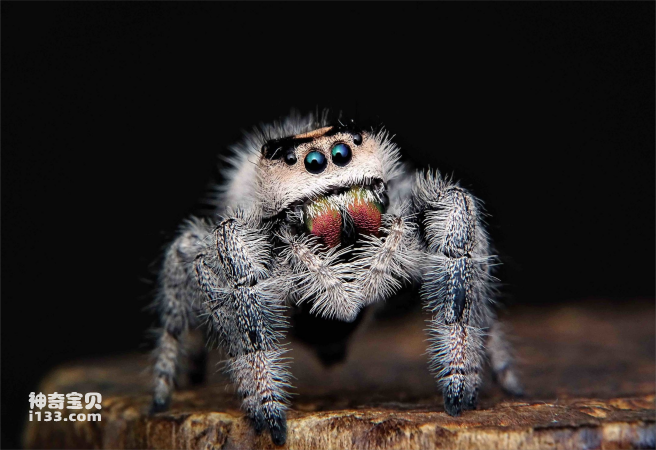Spiders (scientific name: Araneae) are a type of arthropods widely distributed all over the earth. They are one of the groups and have unique anatomical structures and living habits. The following is a detailed introduction to spiders and their living habits:

Body Structure: Spiders usually have a body consisting of two main parts: the cephalothorax and the abdomen. Their heads have eight compound eyes and a pair of chelicerae, and their feet usually have eight or more slender legs.
Silk thread structure: Spiders have glands that secrete silk threads, which are used to build webs, capture prey, and build nests. There are many types and uses of silk threads, including building webs, hunting, mating, excretion, etc.
Exoskeleton: Spiders are arthropods whose bodies are wrapped in an exoskeleton and require molting to grow.
Food habits: Spiders mainly feed on insects and capture prey through their webs. Some species will also take the initiative to hunt. Spiders entangle their prey in silk threads, inject digestive juices and then suck it.
Reproductive behavior: Spiders reproduce in various ways. Some species attract mates through dance, and some species of female spiders lay eggs for protection in their nests. Some spiders are particularly sensitive to smell or touch, and males must be careful not to be taken as prey.
Habitat: Spiders live in a variety of environments, including grassland, trees, grass, deserts, rocks, etc. They can find suitable habitats in a variety of environments.
Sociality: Most spiders are solitary, and each spider generally builds its own nest or web to hunt its prey. Only a few spiders are social, and some species of social spiders form large groups.
Ecological balance: Spiders play an important role in the ecosystem. As predators, they control the number of insect populations and help maintain ecological balance.
Community relationships: Spiders have complex ecological relationships with other animals. They interact with prey, food, plants, etc., forming part of the ecological chain.
Spiders are one of the most numerous and diverse arthropods on earth, and they live in nature with unique habits and behaviors. Understanding the ecological roles and living habits of spiders helps us better understand natural ecosystems. If you need more information about spiders or other creatures please feel free to let me know. Hope this information helps you!
animal tags: spider
We created this article in conjunction with AI technology, then made sure it was fact-checked and edited by a Animals Top editor.